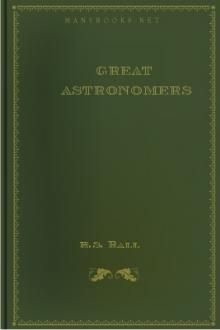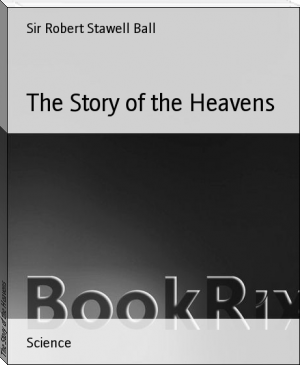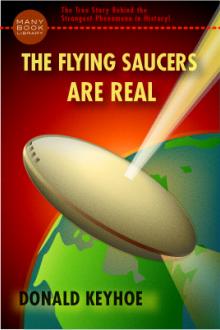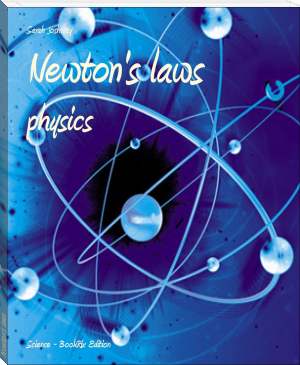Great Astronomers by Robert Stawell Ball (uplifting novels .txt) 📕

- Author: Robert Stawell Ball
- Performer: -
Book online «Great Astronomers by Robert Stawell Ball (uplifting novels .txt) 📕». Author Robert Stawell Ball
the author frequently leaves great gaps in his argument, to the
sad discomfiture of his reader. Nor does it mend matters to say,
as Laplace often does say, that it is “easy to see” how
one step follows from another. Such inferences often present
great difficulties even to excellent mathematicians. Tradition
indeed tells us that when Laplace had occasion to refer to his own
book, it sometimes happened that an argument which he had
dismissed with his usual formula, “Il est facile a voir,” cost the
illustrious author himself an hour or two of hard thinking
before he could recover the train of reasoning which had been
omitted. But there are certain parts of this great work which
have always received the enthusiastic admiration of
mathematicians. Laplace has, in fact, created whole tracts of
science, some of which have been subsequently developed with much
advantage in the prosecution of the study of Nature.
Judged by a modern code the gravest defect of Laplace’s great work
is rather of a moral than of a mathematical nature. Lagrange and
he advanced together in their study of the mechanics of the
heavens, at one time perhaps along parallel lines, while at other
times they pursued the same problem by almost identical methods.
Sometimes the important result was first reached by Lagrange,
sometimes it was Laplace who had the good fortune to make the
discovery. It would doubtless be a difficult matter to draw the
line which should exactly separate the contributions to astronomy
made by one of these illustrious mathematicians, and
the contributions made by the other. But in his great work
Laplace in the loftiest manner disdained to accord more than the
very barest recognition to Lagrange, or to any of the other
mathematicians, Newton alone excepted, who had advanced our
knowledge of the mechanism of the heavens. It would be quite
impossible for a student who confined his reading to the
“Mecanique Celeste” to gather from any indications that it
contains whether the discoveries about which he was reading had
been really made by Laplace himself or whether they had not been
made by Lagrange, or by Euler, or by Clairaut. With our present
standard of morality in such matters, any scientific man who now
brought forth a work in which he presumed to ignore in this
wholesale fashion the contributions of others to the subject on
which he was writing, would be justly censured and bitter
controversies would undoubtedly arise. Perhaps we ought not
to judge Laplace by the standard of our own time, and in any case
I do not doubt that Laplace might have made a plausible
defence. It is well known that when two investigators are working
at the same subjects, and constantly publishing their results, it
sometimes becomes difficult for each investigator himself to
distinguish exactly between what he has accomplished and that
which must be credited to his rival. Laplace may probably have
said to himself that he was going to devote his energies to a
great work on the interpretation of Nature, that it would take all
his time and all his faculties, and all the resources of knowledge
that he could command, to deal justly with the mighty problems
before him. He would not allow himself to be distracted by any
side issue. He could not tolerate that pages should be wasted in
merely discussing to whom we owe each formula, and to whom each
deduction from such formula is due. He would rather endeavour to
produce as complete a picture as he possibly could of the
celestial mechanics, and whether it were by means of his
mathematics alone, or whether the discoveries of others may have
contributed in any degree to the result, is a matter so
infinitesimally insignificant in comparison with the grandeur of
his subject that he would altogether neglect it. “If Lagrange
should think,” Laplace might say, “that his discoveries had been
unduly appropriated, the proper course would be for him to do
exactly what I have done. Let him also write a “Mecanique
Celeste,” let him employ those consummate talents which he
possesses in developing his noble subject to the utmost. Let him
utilise every result that I or any other mathematician have
arrived at, but not trouble himself unduly with unimportant
historical details as to who discovered this, and who discovered
that; let him produce such a work as he could write, and I shall
heartily welcome it as a splendid contribution to our science.”
Certain it is that Laplace and Lagrange continued the best of
friends, and on the death of the latter it was Laplace who was
summoned to deliver the funeral oration at the grave of his great
rival.
The investigations of Laplace are, generally speaking, of too
technical a character to make it possible to set forth any account
of them in such a work as the present. He did publish, however,
one treatise, called the ” Systeme du Monde,” in which, without
introducing mathematical symbols, he was able to give a general
account of the theories of the celestial movements, and of the
discoveries to which he and others had been led. In this work the
great French astronomer sketched for the first time that
remarkable doctrine by which his name is probably most generally
known to those readers of astronomical books who are not specially
mathematicians. It is in the “Systeme du Monde” that Laplace laid
down the principles of the Nebular Theory which, in modern days,
has been generally accepted by those philosophers who are
competent to judge, as substantially a correct expression of a
great historical fact.
[PLATE: LAPLACE.]
The Nebular Theory gives a physical account of the origin of the
solar system, consisting of the sun in the centre, with the
planets and their attendant satellites. Laplace perceived the
significance of the fact that all the planets revolved in the same
direction around the sun; he noticed also that the movements of
rotation of the planets on their axes were performed in the same
direction as that in which a planet revolves around the sun; he
saw that the orbits of the satellites, so far at least as he knew
them, revolved around their primaries also in the same direction.
Nor did it escape his attention that the sun itself rotated on its
axis in the same sense. His philosophical mind was led to reflect
that such a remarkable unanimity in the direction of the movements
in the solar system demanded some special explanation. It would
have been in the highest degree improbable that there should have
been this unanimity unless there had been some physical reason to
account for it. To appreciate the argument let us first
concentrate our attention on three particular bodies, namely the
earth, the sun, and the moon. First the earth revolves around the
sun in a certain direction, and the earth also rotates on its
axis. The direction in which the earth turns in accordance with
this latter movement might have been that in which it revolves
around the sun, or it might of course have been opposite thereto.
As a matter of fact the two agree. The moon in its monthly
revolution around the earth follows also the same direction, and
our satellite rotates on its axis in the same period as its
monthly revolution, but in doing so is again observing this same
law. We have therefore in the earth and moon four movements, all
taking place in the same direction, and this is also identical
with that in which the sun rotates once every twenty-five days.
Such a coincidence would be very unlikely unless there were some
physical reason for it. Just as unlikely would it be that in
tossing a coin five heads or five tails should follow each other
consecutively. If we toss a coin five times the chances that it
will turn up all heads or all tails is but a small one. The
probability of such an event is only one-sixteenth.
There are, however, in the solar system many other bodies besides
the three just mentioned which are animated by this common
movement. Among them are, of course, the great planets, Jupiter,
Saturn, Mars, Venus, and Mercury, and the satellites which attend
on these planets. All these planets rotate on their axes in the
same direction as they revolve around the sun, and all their
satellites revolve also in the same way. Confining our attention
merely to the earth, the sun, and the five great planets with
which Laplace was acquainted, we have no fewer than six motions of
revolution and seven motions of rotation, for in the latter we
include the rotation of the sun. We have also sixteen satellites
of the planets mentioned whose revolutions round their primaries
are in the same direction. The rotation of the moon on its axis
may also be reckoned, but as to the rotations of the satellites of
the other planets we cannot speak with any confidence, as they are
too far off to be observed with the necessary accuracy. We have
thus thirty circular movements in the solar system connected with
the sun and moon and those great planets than which no others were
known in the days of Laplace. The significant fact is that all
these thirty movements take place in the same direction. That
this should be the case without some physical reason would be just
as unlikely as that in tossing a coin thirty times it should turn
up all heads or all tails every time without exception.
We can express the argument numerically. Calculation proves that
such an event would not generally happen oftener than once out of
five hundred millions of trials. To a philosopher of Laplace’s
penetration, who had made a special study of the theory of
probabilities, it seemed well-nigh inconceivable that there
should have been such unanimity in the celestial movements,
unless there had been some adequate reason to account for it.
We might, indeed, add that if we were to include all the objects
which are now known to belong to the solar system, the argument
from probability might be enormously increased in strength. To
Laplace the argument appeared so conclusive that he sought for
some physical cause of the remarkable phenomenon which the solar
system presented. Thus it was that the famous Nebular Hypothesis
took its rise. Laplace devised a scheme for the origin of the sun
and the planetary system, in which it would be a necessary
consequence that all the movements should take place in the same
direction as they are actually observed to do.
Let us suppose that in the beginning there was a gigantic mass of
nebulous material, so highly heated that the iron and other
substances which now enter into the composition of the earth and
planets were then suspended in a state of vapour. There is
nothing unreasonable in such a supposition indeed, we know as a
matter of fact that there are thousands of such nebulae to be
discerned at present through our telescopes. It would be
extremely unlikely that any object could exist without possessing
some motion of rotation; we may in fact assert that for rotation
to be entirety absent from the great primeval nebula would be
almost infinitely improbable. As ages rolled on, the nebula
gradually dispersed away by radiation its original stores of heat,
and, in accordance with well-known physical principles, the
materials of which it was formed would tend to coalesce. The
greater part of those materials would become concentrated in a
mighty mass surrounded by outlying uncondensed vapours. There
would, however, also be regions throughout the extent of the
nebula, in which subsidiary centres of condensation would be
found. In its long course of cooling, the nebula would,
therefore, tend ultimately to form a mighty central body with a
number of smaller bodies disposed around it. As the





Comments (0)